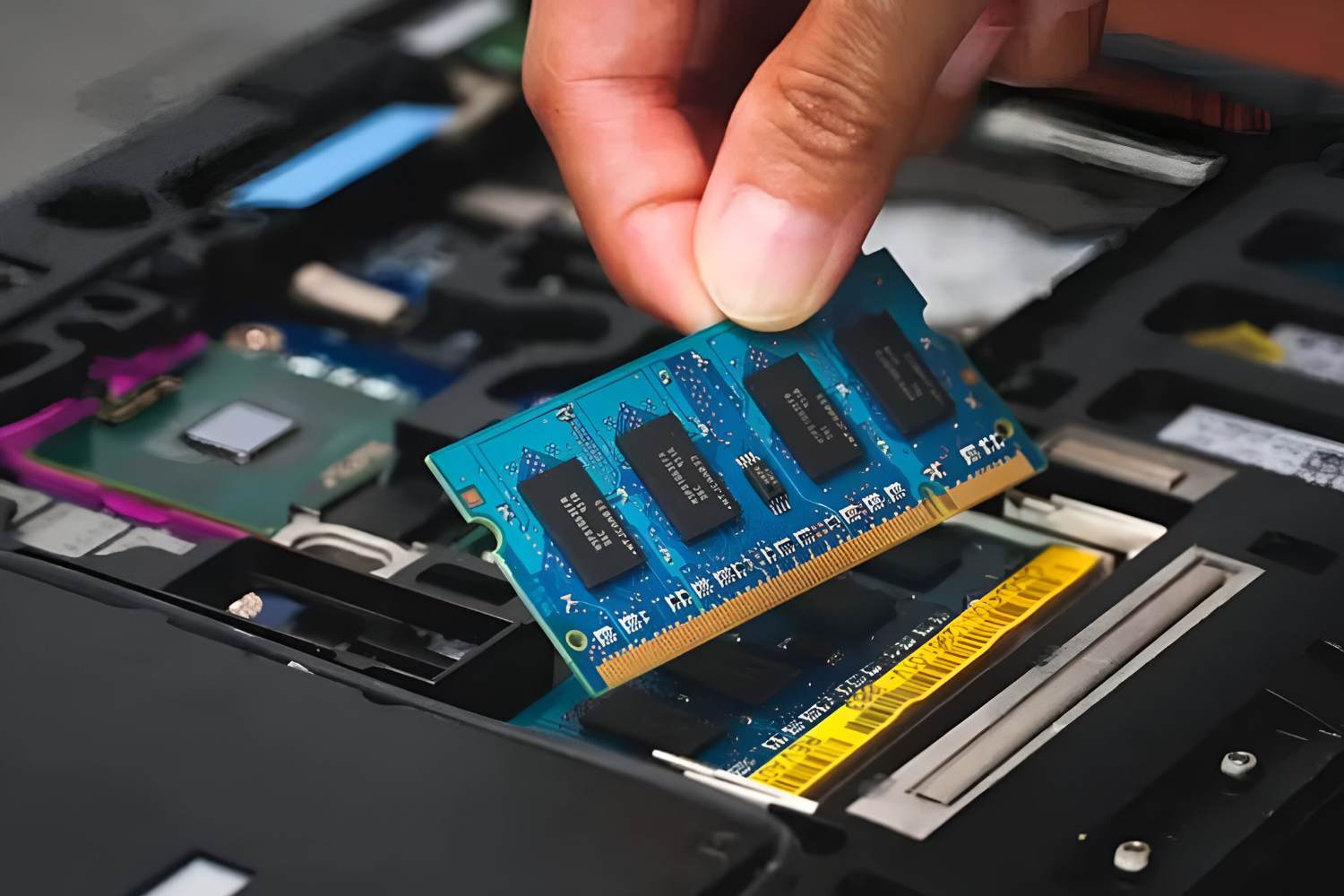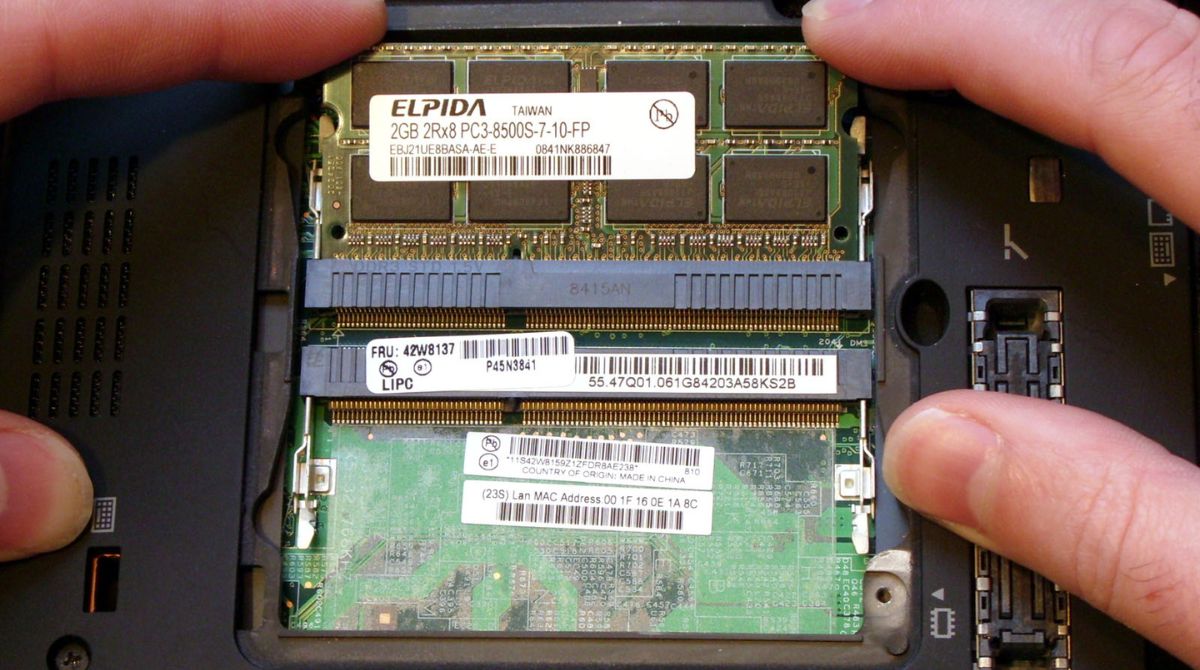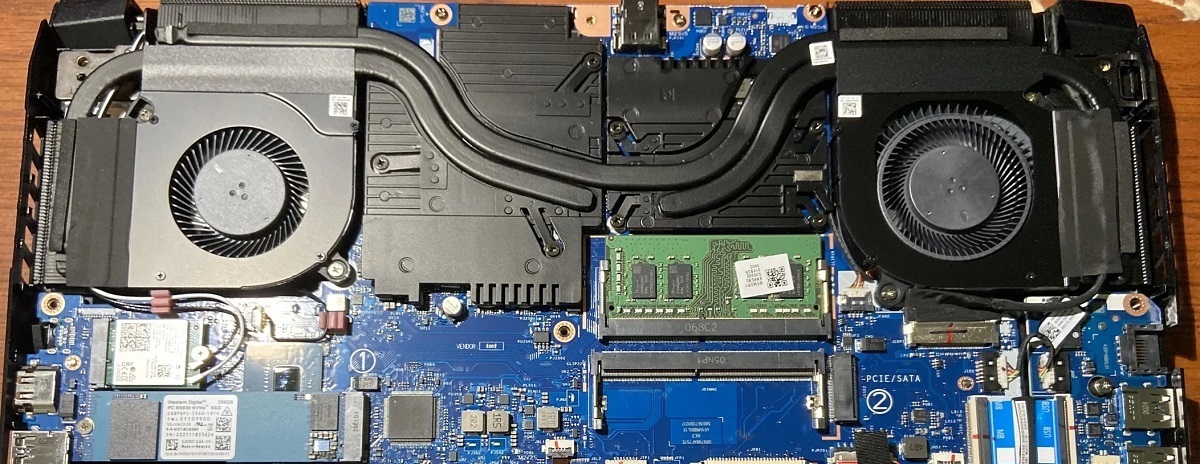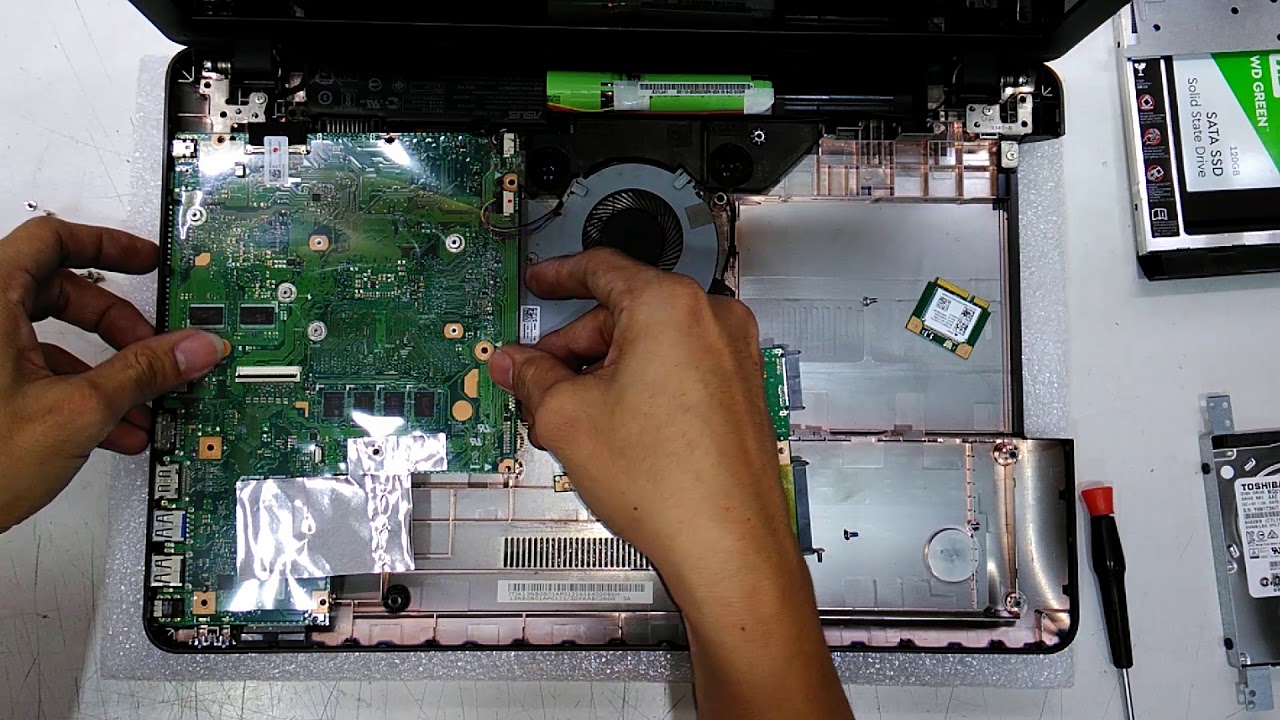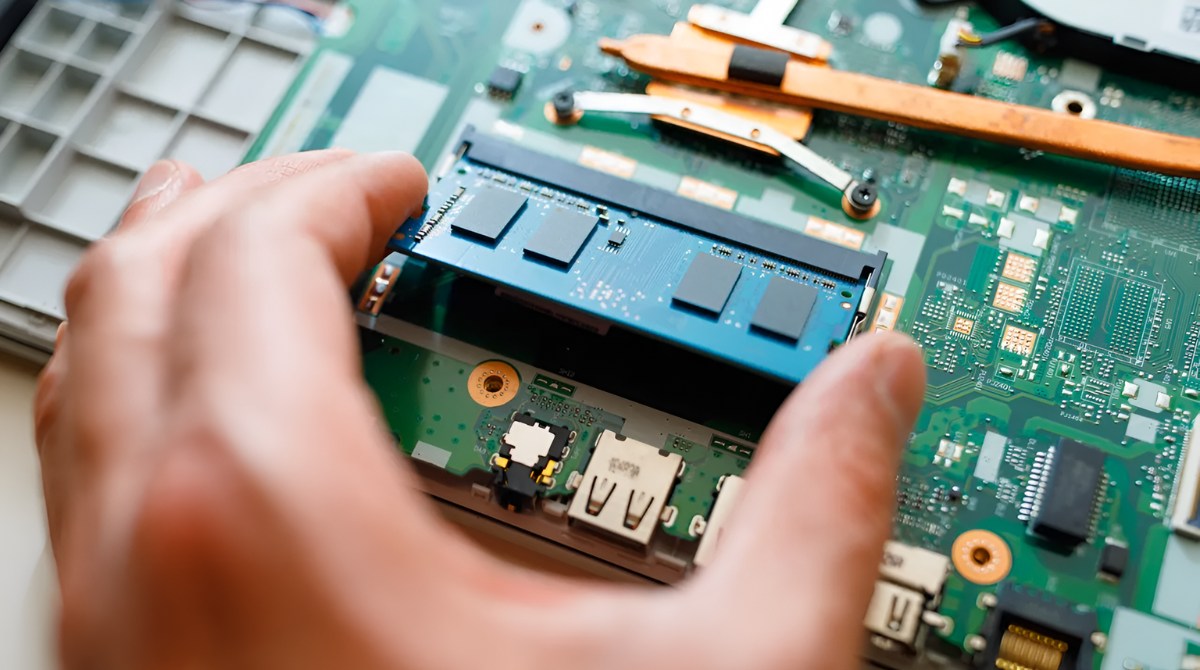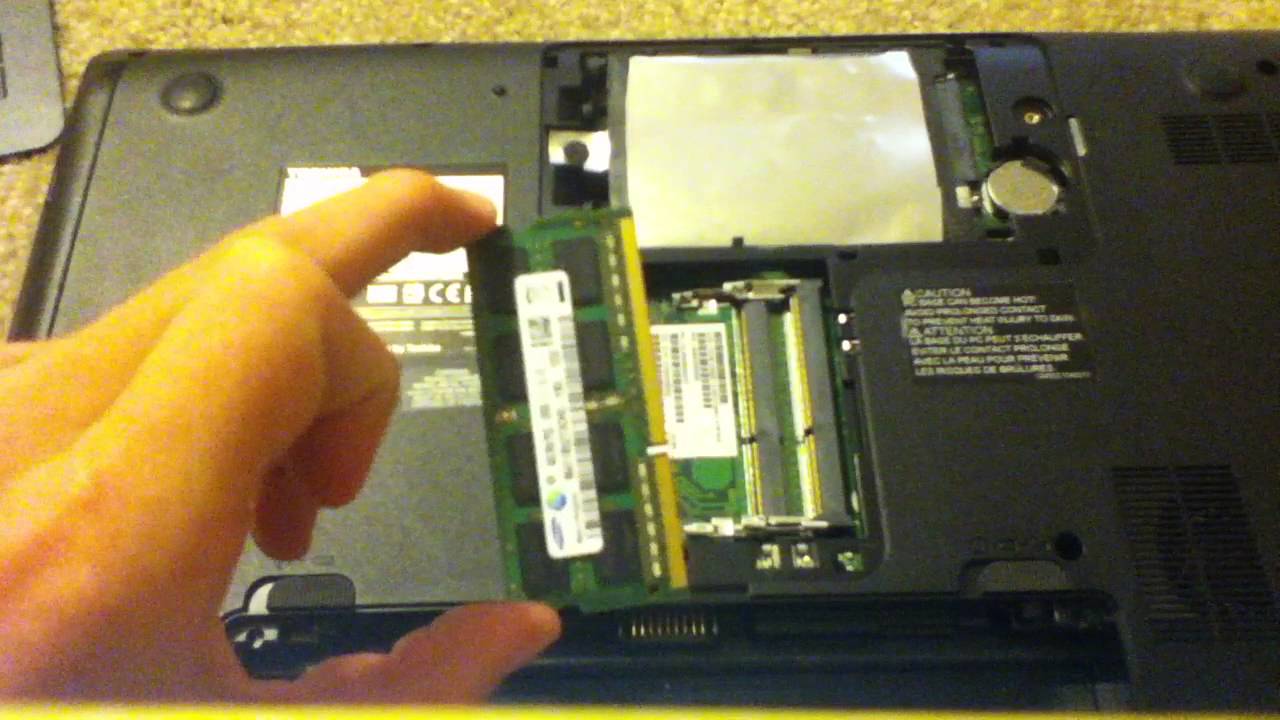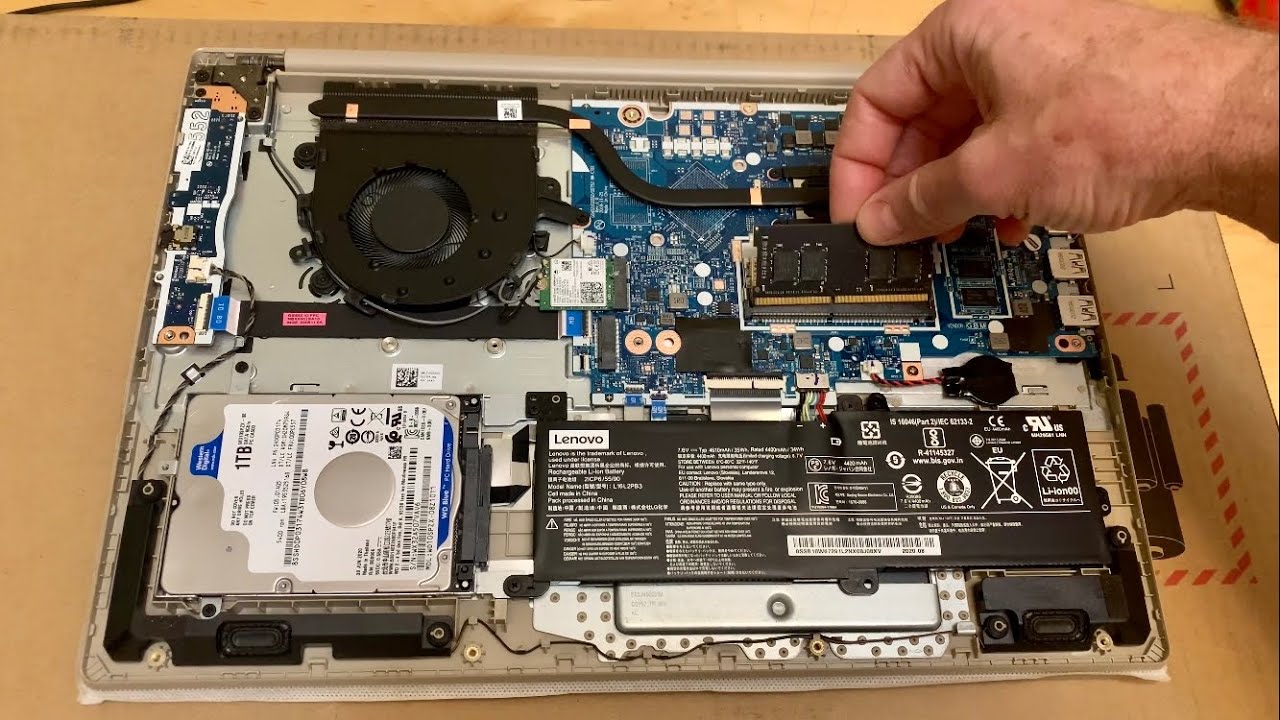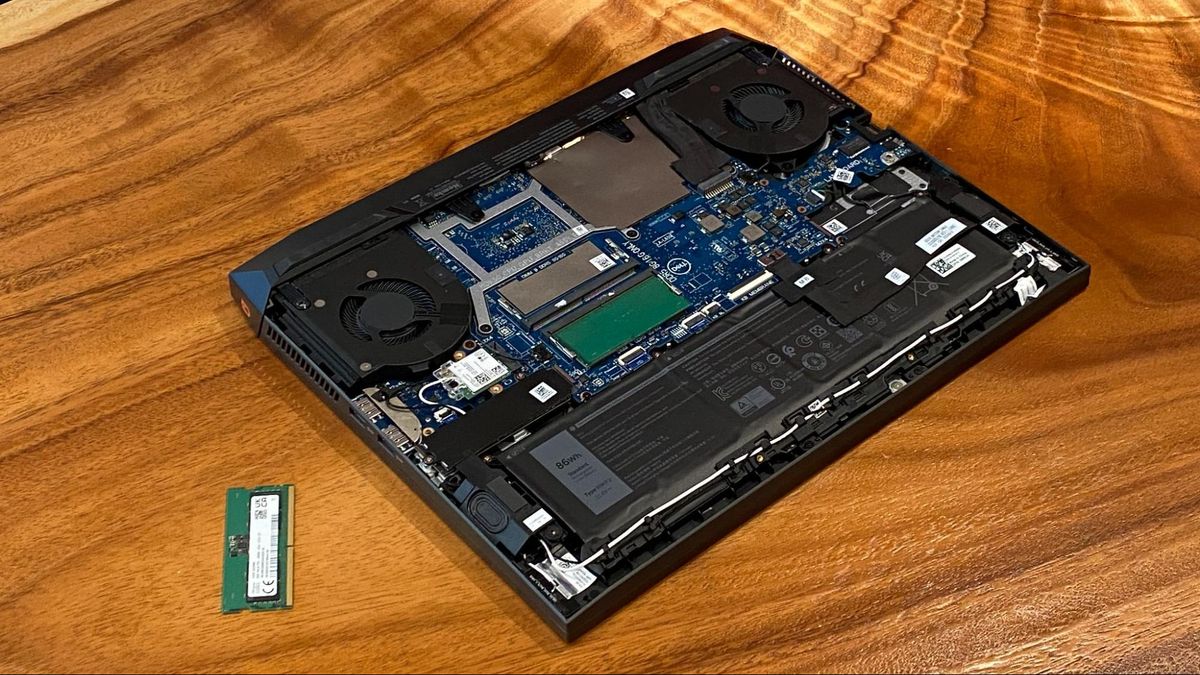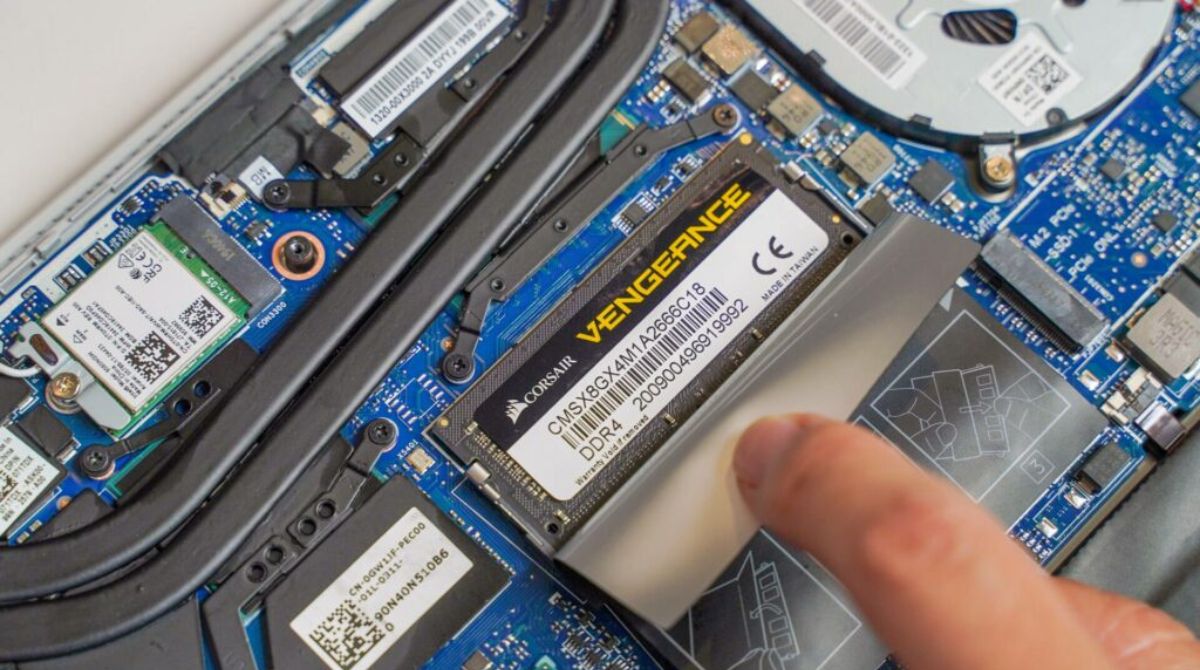Introduction
When it comes to laptop performance, one of the key components to consider is the RAM, or Random Access Memory. Understanding where the RAM is located on your laptop can be helpful for various reasons. Whether you’re looking to upgrade your laptop’s memory or troubleshoot performance issues, having knowledge of the RAM location is essential.
RAM plays a vital role in the overall speed and responsiveness of your laptop. It serves as a temporary storage space for data that your laptop actively uses, allowing for quick access and retrieval. The more RAM your laptop has, the more data it can store and process simultaneously, resulting in faster performance and smoother multitasking.
Knowing where your laptop’s RAM is located is particularly useful when it comes to upgrading. By locating the RAM slots, you can determine the maximum capacity and type of RAM that your laptop supports. This information allows you to make informed decisions on upgrading to improve your laptop’s performance.
Different laptop models have different configurations and designs, which can affect the location of the RAM. Some laptops have easily accessible RAM slots, while others may require you to remove the bottom panel or keyboard to reach the RAM modules. Understanding how to locate the RAM on your specific laptop model is crucial to avoid unnecessary disassembly or potential damage.
In this article, we will explore the various locations of RAM on different laptop models and provide step-by-step instructions on how to locate the RAM on your own laptop. We will also offer some tips for upgrading your laptop’s RAM and maximizing its performance. So, let’s dive in and explore the world of laptop RAM!
What is RAM?
RAM, or Random Access Memory, is an essential component of a laptop’s hardware that plays a crucial role in its performance. Unlike permanent storage devices like hard drives or solid-state drives, RAM is a type of volatile memory that provides temporary storage for data that the laptop actively uses.
Think of RAM as the working area of your laptop. It allows the processor to quickly access and retrieve data that is needed to perform tasks. When you open an application or a file, it gets loaded into the RAM so that the processor can access it faster, resulting in smoother and faster performance.
The amount of RAM in your laptop determines how much data it can store and process simultaneously. More RAM means that your laptop can handle more tasks and applications without slowing down. This is particularly important for resource-intensive tasks such as video editing, gaming, or running multiple applications at once.
Not only does RAM affect the overall performance of your laptop, but it also influences multitasking capabilities. With sufficient RAM, you can seamlessly switch between applications, open multiple browser tabs, and perform various tasks simultaneously without encountering performance issues.
RAM is available in different capacities, typically measured in gigabytes (GB). Common RAM capacities for laptops range from 4GB to 32GB or more. The specific amount of RAM you need depends on your usage requirements. If you primarily use your laptop for basic tasks like web browsing, word processing, and multimedia streaming, 8GB or 16GB of RAM is usually sufficient. However, if you engage in demanding tasks such as video editing, graphic design, or gaming, having 16GB or more can significantly enhance performance.
It’s important to note that RAM is different from storage capacity. While RAM provides temporary storage for active data, storage devices like hard drives or solid-state drives store data permanently even when the laptop is powered off. This means that any data stored in RAM is lost once the laptop is turned off or restarted, making it important to save your work before shutting down.
Now that you have a better understanding of what RAM is and its significance to your laptop’s performance, let’s explore why it’s crucial to know where the RAM is located on your laptop.
Why should you know where the RAM is located on your laptop?
Understanding the location of the RAM on your laptop can be highly beneficial for multiple reasons. Whether you’re looking to upgrade your laptop’s memory or troubleshoot performance issues, having knowledge of the RAM location is essential. Here’s why:
1. Upgrading RAM: One of the primary reasons for knowing the RAM’s location is to upgrade it. Upgrading your laptop’s RAM can significantly enhance its performance, especially if you frequently work with resource-intensive applications or multitask heavily. By identifying the RAM slots’ location, you can determine the maximum capacity and type of RAM your laptop supports, ensuring a compatible upgrade.
2. Improving Performance: As mentioned earlier, RAM plays a critical role in your laptop’s performance. By increasing the amount of RAM, you can improve its multitasking capabilities and overall responsiveness. Knowing the RAM location helps you understand how to access and upgrade it, optimizing your laptop’s performance for your specific needs.
3. Troubleshooting: When encountering performance issues or system slowdowns, inadequate RAM can be a common culprit. Being aware of the RAM’s location enables you to easily access and diagnose any potential issues. You can check for loose connections or faulty RAM modules and make necessary adjustments or replacements to resolve the problem.
4. Compatibility: Certain laptop models may have specific requirements when it comes to RAM upgrades. Some laptops have limitations in terms of the maximum RAM capacity or the supported RAM type. Knowing the RAM’s location helps you identify these restrictions and ensures that any upgrade you make is compatible with your laptop’s specifications.
5. Preventing Damage: Incorrectly accessing or handling the RAM can lead to damage to both the RAM module and your laptop. Knowing the proper location and procedure for accessing the RAM reduces the risk of accidentally damaging other components while attempting an upgrade or troubleshooting.
By understanding where the RAM is located on your laptop, you gain the knowledge and confidence to optimize your laptop’s performance, troubleshoot issues, and upgrade efficiently. In the next section, we will explore the various RAM locations on different laptop models, providing you with a better understanding of how to locate the RAM on your own laptop.
Different laptop models and their RAM locations
The location of the RAM on a laptop can vary depending on the model and manufacturer. While some laptops have easily accessible RAM slots, others may require more intricate disassembly to reach the RAM. Here are some common laptop models and their typical RAM locations:
- 1. Laptops with bottom panel access: Many laptops, especially budget-friendly ones, have a straightforward design that allows easy access to the RAM slots through the bottom panel. In such laptops, you’ll usually find a small compartment secured by screws that can be easily removed to reveal the RAM modules. Commonly, the RAM slots are grouped together near the center of the laptop’s underside.
- 2. Laptops with keyboard access: Some premium laptops or ultrabooks have a design that requires removing the keyboard to access the RAM slots. This design choice is often made to ensure a slimmer profile or to provide additional structural stability. If your laptop falls into this category, you’ll need to carefully remove the keyboard to reveal the RAM slots located underneath. It’s important to follow proper disassembly instructions to avoid damaging any components.
- 3. Laptops with internal access: In certain laptops, especially those with a compact form factor or specialized designs like 2-in-1 convertibles or all-in-one PCs, the RAM may be located inside the laptop’s chassis. This means you’ll have to partially disassemble the laptop or seek professional assistance to access and upgrade the RAM. Manufacturers often provide detailed service manuals or online guides to help users perform internal upgrades safely.
- 4. Customized or niche laptops: Some laptops, particularly those designed for specific purposes like gaming or professional workstations, may have unique configurations and layouts. These laptops might feature a custom-designed chassis or cooling system that affects the RAM’s location. It’s essential to refer to the manufacturer’s documentation or support resources for precise information on locating the RAM in these specialized models.
It’s worth noting that while the specific location of the RAM may vary, the appearance of the RAM modules themselves is fairly consistent. RAM modules are usually small, rectangular-shaped circuit boards with a series of gold or silver pins. They may be covered by metal heat spreaders or shields for improved cooling.
Consulting your laptop’s user manual or the manufacturer’s website can provide detailed instructions on locating the RAM on your specific model. In the next section, we’ll explore how you can locate the RAM on your laptop, regardless of the model or design.
How to locate the RAM on your laptop
Locating the RAM on your laptop may seem daunting, but with the right instructions, it can be a straightforward process. Here are the general steps to help you locate the RAM on your laptop:
- 1. Check the manual: Start by referring to your laptop’s user manual or the manufacturer’s website. They often provide detailed instructions on how to access and upgrade the RAM. Look for a section specifically addressing RAM upgrades or the internal components of your laptop.
- 2. Power off your laptop: Before attempting to locate the RAM, it’s crucial to power off and unplug your laptop. This ensures your safety and minimizes the risk of any damage to your laptop or the RAM modules.
- 3. Determine the access method: Depending on your laptop model, you’ll need to determine the access method for the RAM. Some laptops have easily accessible RAM slots through a bottom panel, while others require removing the keyboard or partially disassembling the chassis. Review the instructions provided by the manufacturer to identify the specific method for your laptop.
- 4. Remove the necessary components: If your laptop has a bottom panel, unscrew the screws securing it in place and remove it. If you need to remove the keyboard, search for instructions on how to do so carefully. Follow the steps provided to avoid damaging any components.
- 5. Locate the RAM slots: Once you have access to the internal components, you’ll be able to locate the RAM slots. In most cases, the RAM slots will be grouped together and easily identifiable. They will typically have retention clips or screws holding the RAM modules in place.
- 6. Identify the RAM modules: Look for small, rectangular circuit boards with gold or silver pins. These are the RAM modules. They may be covered by heat spreaders or shields for improved cooling. Make note of the capacity and type of RAM modules currently installed on your laptop for reference, if needed.
- 7. Make necessary upgrades or troubleshoot: If you’re upgrading the RAM, carefully remove the existing modules by releasing the retention clips or unscrewing any screws. Install the new RAM modules, ensuring they are properly aligned and inserted into the slots. Secure them in place using the retention clips or screws. If you’re troubleshooting, check for loose connections or abnormal signs like burn marks on the RAM modules.
- 8. Reassemble and test: Once you’ve completed the necessary upgrades or troubleshooting, reassemble your laptop by following the reverse steps of disassembly. Power on your laptop and verify that it recognizes the newly installed RAM or that the performance issue has been resolved.
It’s important to note that these steps are general guidelines, and the exact process may vary depending on your laptop model and manufacturer. Always refer to the specific instructions provided by the manufacturer to ensure you follow the correct procedures.
Now that you know how to locate the RAM on your laptop, let’s explore some tips for upgrading your laptop’s RAM in the next section.
Tips for upgrading your laptop’s RAM
Upgrading your laptop’s RAM can significantly improve its performance and multitasking capabilities. Here are some useful tips to keep in mind when upgrading your laptop’s RAM:
- 1. Check compatibility: Before purchasing new RAM modules, ensure that they are compatible with your laptop. Check your laptop’s user manual or the manufacturer’s website for supported RAM types, sizes, and maximum capacities. It’s essential to match the specifications to ensure successful installation and optimal performance.
- 2. Consider your needs: Assess your usage requirements to determine how much RAM you need. If you primarily engage in basic tasks like web browsing and word processing, 8GB or 16GB is usually sufficient. However, if you frequently work with resource-intensive applications or perform tasks like video editing or gaming, consider upgrading to 16GB or more for improved performance.
- 3. Purchase from reputable brands: Buy RAM modules from trusted and reliable manufacturers. Reliable brands not only ensure compatibility but also offer warranties and better customer support if any issues arise during the installation or usage of the RAM.
- 4. Consider upgrading in pairs: If your laptop has multiple RAM slots, consider upgrading in pairs of identical RAM modules. This allows for better performance and compatibility as the modules can work together in dual-channel mode. Check your laptop’s specifications to determine if dual-channel memory is supported.
- 5. Plan for the future: If you anticipate the need for even more RAM in the future, consider purchasing higher capacity modules from the start. This allows for easier future upgrades without needing to replace all of the existing RAM modules.
- 6. Take proper precautions: ESD (Electrostatic Discharge) can damage your laptop’s components. Before handling RAM modules, ground yourself by touching a grounded metallic object or use an ESD wrist strap. Avoid touching the contacts or circuitry on the RAM modules to prevent any potential damage from static electricity.
- 7. Follow manufacturer’s instructions: When installing the new RAM modules, carefully follow the instructions provided by the manufacturer. Pay attention to the correct orientation of the modules and ensure they are securely inserted into the slots. Improper installation can cause compatibility issues or damage to the modules or your laptop.
- 8. Test and monitor: After upgrading the RAM, power on your laptop and check if it recognizes the new RAM modules. Monitor the performance and ensure that the RAM is functioning correctly. If any issues arise, consult the manufacturer’s support resources or seek professional assistance.
By considering these tips, you can ensure a smooth and successful upgrade of your laptop’s RAM, enhancing its performance and productivity.
In the next section, we will wrap up our discussion and summarize the key points covered throughout this article.
Conclusion
Understanding the location of the RAM on your laptop is essential for upgrading, troubleshooting performance issues, and optimizing your laptop’s performance. RAM plays a crucial role in multitasking capabilities, responsiveness, and overall speed. By knowing where the RAM is located, you can confidently upgrade the memory, improve performance, and maximize the potential of your laptop.
We explored various laptop models and their typical RAM locations, ranging from easily accessible bottom panel slots to more complex designs that require keyboard removal or internal access. Remember to consult your laptop’s user manual or the manufacturer’s website for specific instructions tailored to your laptop model.
In addition, we provided step-by-step guidelines on how to locate the RAM on your laptop, emphasizing the importance of following the manufacturer’s instructions to prevent damage and ensure a successful upgrade or troubleshooting process.
Furthermore, we discussed tips for upgrading your laptop’s RAM, including checking compatibility, considering your usage needs, purchasing from reputable brands, and taking proper precautions during installation. Following these tips will help you make informed decisions and achieve optimal results when upgrading your laptop’s RAM.
By expanding your knowledge of where the RAM is located on your laptop and understanding the process of upgrading or troubleshooting, you gain the confidence and ability to enhance your laptop’s performance and productivity.
Whether you’re a student, professional, or casual user, having adequate RAM and knowing how to manage it effectively can make a significant difference in your laptop’s overall performance. So, take the time to explore the RAM location on your laptop and consider upgrading if needed. You’ll be rewarded with smoother multitasking, faster response times, and a more enjoyable computing experience.







